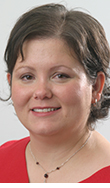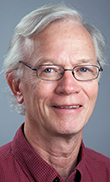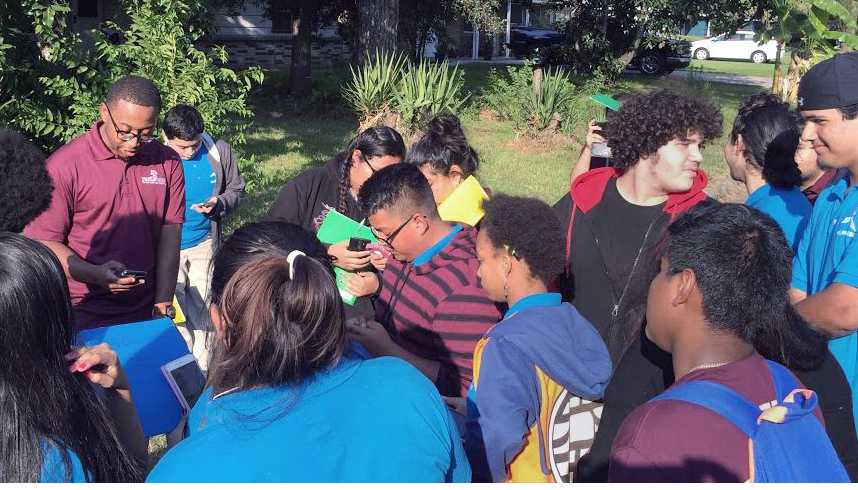Texas A&M study eyes value of citizen-sourced scientific data

Shannon Van Zandt

Phili Berke

Marccus Hendricks
A team of Texas A&M urban planners are investigating the value of allowing “citizen scientists” to collect environmental data for agencies charged with protecting lives and property in natural disasters as part of a two-year National Science Foundation study.
The study is the focus of a 2018 [paper] (https://www.sciencedirect.com/science/article/pii/S2210670717313100?via%3Dihub) by Marccus Hendricks ’17, a former Texas A&M [Ph.D. Urban and Regional Sciences] (http://laup.arch.tamu.edu/academics/graduate/ursc/) student, who suggests that citizens trained to collect environmental data could provide critical assistance to municipal staffs charged with maintaining urban infrastructure. His paper was published in the [Sustainable Cities and Society] (https://www.journals.elsevier.com/sustainable-cities-and-society) journal.
“Many urban areas in the U.S. and across the world need affordable, effective approaches to infrastructure condition assessment,” said Hendricks, who is now assistant professor of urban planning at the University of Maryland.
Without boots-on-the-ground assessments, he said, city maintenance officials may act with a limited knowledge of infrastructure needs or the ability to prioritize those needs.
In the study, which concludes in August 2018, co-principal investigators Philip Berke and Shannon Van Zandt, Texas A&M professors of [urban planning] (http://laup.arch.tamu.edu) , Hendricks, and other researchers are exploring the reliability and validity of citizen-generated monitoring data, and developing, testing and refining tools and protocols for this kind of data collection.
They are working in [Manchester] (https://www.google.com/maps/place/Harrisburg%2F+Manchester,+Houston,+TX/@29.7178273,-95.2810718,14z/data=!3m1!4b1!4m5!3m4!1s0x8640bd08c9f9729b:0x75fea53ed45ad9d6!8m2!3d29.7163258!4d-95.2658318) and Sunnyside, two inner-city Houston neighborhoods prone to flooding and air and water pollution, with local citizen scientists who are contributing to multiple, multiyear research initiatives in Texas A&M’s [Resilience and Climate Change Cooperative Project] (http://www.tamug.edu/iscc/RCCCP_Home.html) .
Trained and led by Texas A&M urban planning and public health students, residents in Sunnyside and Manchester, including Furr High School students, evaluate the performance of urban infrastructure, including ditches, culverts, drain pipes, roadside vegetation and impermeable surfaces, and test floodwaters for toxic compounds.
For local governments and municipalities to embrace data collected by citizen scientists and use it for public decision making, it has to be as trustworthy as possible, said Hendricks.
In the NSF-funded study, researchers have developed methods of testing the reliability and validity of citizen-sourced data by comparing it to data gathered by professionals and technological means.
“Citizen-collected data may contain a greater margin of error, but it can be useful in terms of completeness and timeliness,” said Hendricks.
This approach, implemented across multiple cities at the neighborhood level, could also result in added value, he said.
“Involving students from local school systems in data collection could spark their interest in various academic disciplines associated with RCCCP studies,” he said.
The NSF study also includes Texas A&M urban planning faculty John Cooper and Jaimie Masterson.
Richard Nira
rnira@arch.tamu.edu
Tags
- archone gallery
- diversity
- graduate work
- interdisciplinary
- land development
- landscape architecture & urban planning
- laup gallery
- outreach
- partnerships
- planning
- research
- rss
- sustainability
- wellness
Related Posts

Students create new designs for children’s treatment center

Zhu heading physical activity study project

Nigerians receive LAND students’ plan for medical city
Follow Us
Facebook Twitter Vimeo Youtube Flickr RSS
Recent Posts

Planning prof heads study of disaster housing aid

A message from the dean

Former student remembered as expert planner

Leading educator named new head of Architecture Dept.







_thumbnail_small.png)
